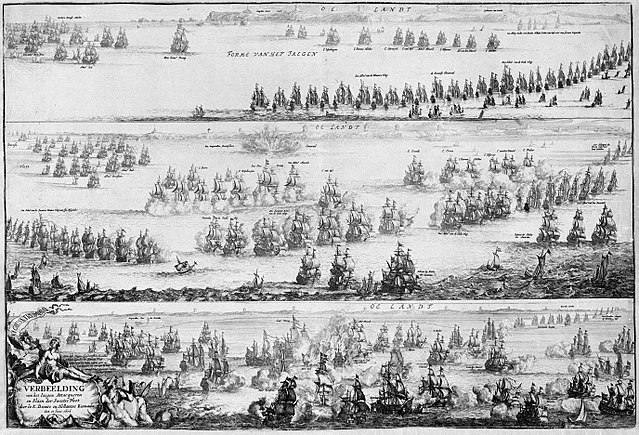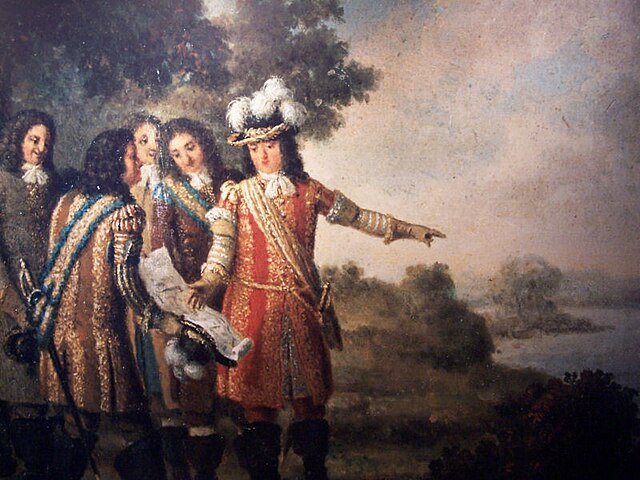Kronan, also called Stora Kronan, was a Swedish warship that served as the flagship of the Swedish Navy in the Baltic Sea in the 1670s. When built, she was one of the largest seagoing vessels in the world. The construction of Kronan lasted from 1668 to 1672 and was delayed by difficulties with financing and conflicts between the shipwright Francis Sheldon and the Swedish admiralty. After four years of service, the ship foundered in rough weather at the Battle of Öland on 1 June 1676: while making a sharp turn under too much sail she capsized, and the gunpowder magazine ignited and blew off most of the bow. Kronan sank quickly, taking about 800 men and more than 100 guns with her, along with valuable military equipment, weapons, personal items, and large quantities of silver and gold coins.
Reconstruction by Jacob Hägg, 1909
Detail of engraving of Stockholm from Suecia antiqua et hodierna by Erik Dahlberg and Willem Swidde, printed in 1693. The view shows the Swedish capital as a bustling port, and in the foreground the peak of Kastellholmen next to the royal shipyards on Skeppsholmen.
Salvaged cannons of various types from Kronan on display at Kalmar County Museum
Firearms, including muskets, on display at Kalmar County Museum
The Battle of Öland was a naval battle between an allied Danish-Dutch fleet and the Swedish navy in the Baltic Sea, off the east coast of Öland on 1 June 1676. The battle was a part of the Scanian War (1675–79) fought for supremacy over the southern Baltic. Sweden was in urgent need of reinforcements for its north German possessions; Denmark sought to ferry an army to Scania in southern Sweden to open a front on Swedish soil.
Sailing order for the Swedish fleet in late 1675. The illustration shows that the Swedish navy had not adapted to the realities of the line of battle. It still followed the patterns of "melee tactics" where small groups of ships acted individually, aiming for close combat and boarding.
Detail of engraving of Stockholm from Suecia antiqua et hodierna by Erik Dahlberg and Willem Swidde, printed in 1693. The view shows the Swedish capital as a bustling port, and in the foreground the peak of Kastellholmen next to the royal shipyards on Skeppsholmen.
A contemporary depiction that divides the battle into three phases: (1) the two fleets sailing northwards along the coast of Öland, just passing the southern tip of Öland, (2) Kronan exploding and Svärdet surrounded, and (3) the Swedish fleet fleeing in disorder, pursued by allied ships. Copper engraving by Romeyn de Hooghe, 1676.
Charles XI pointing to the spot of the new main naval base of the Swedish navy, what would later become the town of Karlskrona; painting by Pehr Hilleström







